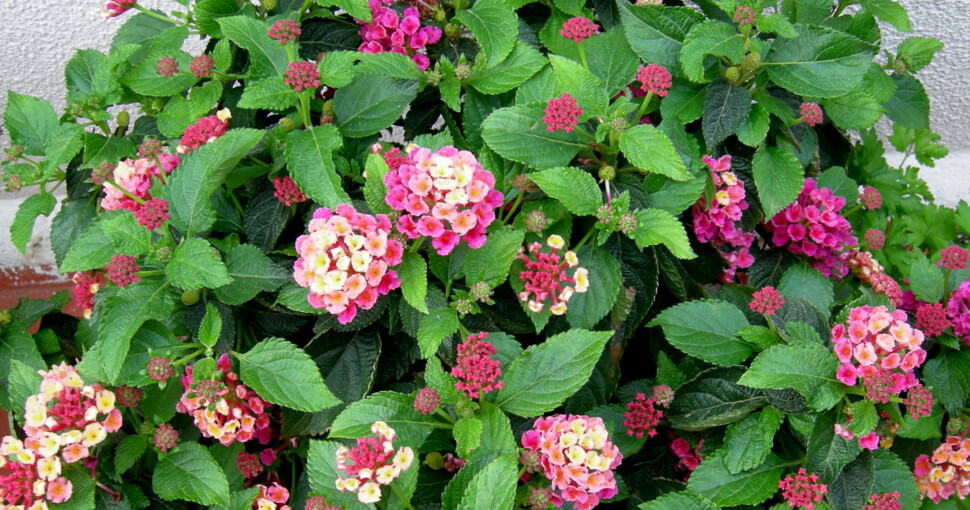Lantana is an easy-to-grow plant that brings much life and color to your garden. These plants love well-drained soil and tons of sun and are great for aspiring botanists to dip their thumbs into gardening without committing to difficult plants. In addition, Lantanas are great for attracting butterflies, hummingbirds, and other natural pollinators.
Contents
But finding and planting Lantana isn’t always as simple as it seems. Lantana can only be planted in spring in generally warm climates throughout the year. There are other alternatives that look like Lantana. These plants include:
- Phlox – are small plants that bloom in a beautiful bouquet of tiny petals like Lantana.
- Basket of Gold – has small bright yellow petals and grows in clusters similar to Lantana.
- Candytuft – is a plant with small white flowers sprouting in tightly packed groups, similar to Lantana.
- Primrose – shares a likeness with Lantana in their color pallet and tight formations.
- Verbena – is an excellent Lantana substitute as it shares many of the same characteristics of Lantana.
- Yarrow – looks almost identical to Lantana when viewed from a distance. Their small white or yellow flowers closely resemble Lantana.
- Zinnias – bring a wide variety of colors to your garden and can be grown almost as easily as Lantana.
Now that we have identified a few candidates, you could consider planting in your garden instead of Lantana. Let’s look at these 7 plants resembling Lantana more closely.
1. Phlox (Polemoniaceae)
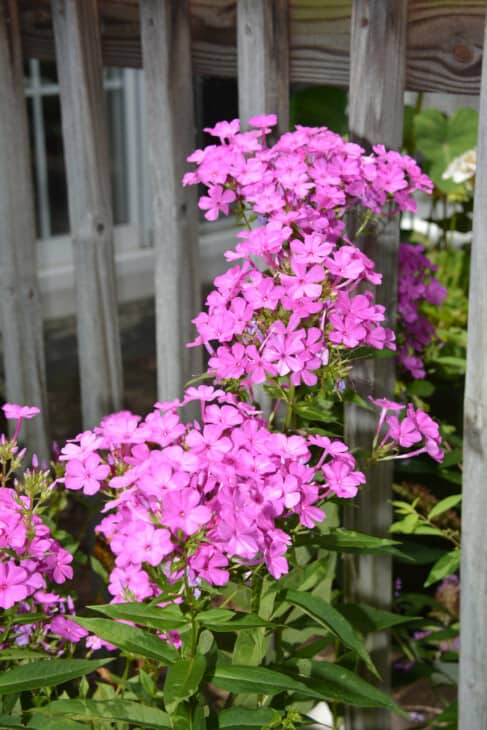
Phlox (Polemoniaceae) is a perennial that can cover a lot of ground, tends to bloom early in spring, and lasts until mid to late summer. Phlox comes in all colors, from white to purple, to yellow and everything in between, making it a very versatile plant that every gardener should attempt to plant at least once.
If you plan on planting some Phlox in your garden, remember to add a thin layer of compost around your plant each spring, this will help control the soil’s moisture and help keep the weeds at bay. If you intend on keeping your newly planted Phlox healthy after their petals have wilted, cut off the dead heads, and remove all the faded flowers, this will allow your Phlox to rebloom next season.
There are wide varieties of Phlox. Pick the one that best meets your specific requirements and will help accentuate your garden. With enough time and planning, your garden will become the talk of the town.
2. Basket Of Gold (Aurinia Saxatilis)
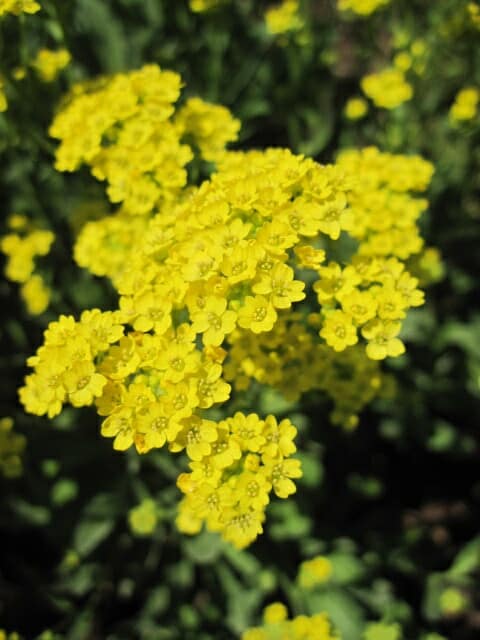
Basket of Gold (Aurinia Saxatilis) is a wonderful stand-in for Lantana. These small delicate flowers bloom into a sea of gold and will bathe your garden in wonder for up to six weeks each spring. Their gray-green foliage makes for excellent ground cover to fill your garden and make it seem bigger than it really is.
Basket of Gold prefers to be planted in full sun and takes well in well-drained soils. Some afternoon shade won’t harm them, especially during hot summer days. Basket of Gold grows to around 12 inches tall and 18 inches wide, so make sure you evenly space out your seedlings to give them enough room to stretch their roots.
Basket of Gold produces tons of nectar and will attract plenty of pollinators to your yard, making it perfect for any nature enthusiast. A word of caution when fertilizing your Basket of Gold, don’t overdo it. Less is more in some cases.
3. Candytuft (Iberis Sempervirens)
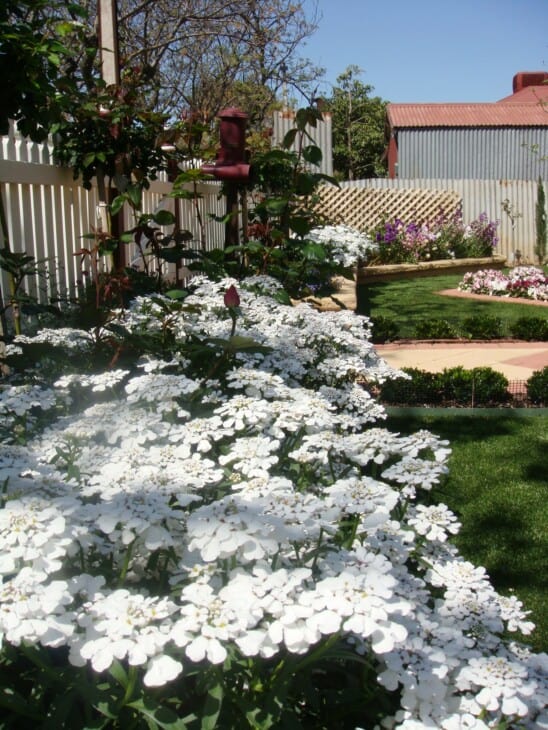
Candytuft (Iberis Sempervirens) is a fantastic plant that looks like Lantana. It is considered an evergreen woody subshrub that thrives in warmer climates. Candytuft gets its name from its small, white, sometimes pink, candy-like petals that grow on the ends of long slender stalks.
Candytuft grows very well when allowed to germinate in pots before being transplanted in early spring. Candytuft, when fully mature, stands almost 18 inches tall and 16 inches wide and prefers full to partial sun.
Planting Candytuft in naturally acidic, well-drained soil is ideal and will ensure you get the most out of them. These little Lantana look-a-likes are native to Europe and some areas within the Mediterranean and bring joy and warmth to any garden.
4. Primrose (Primula Polyantha)
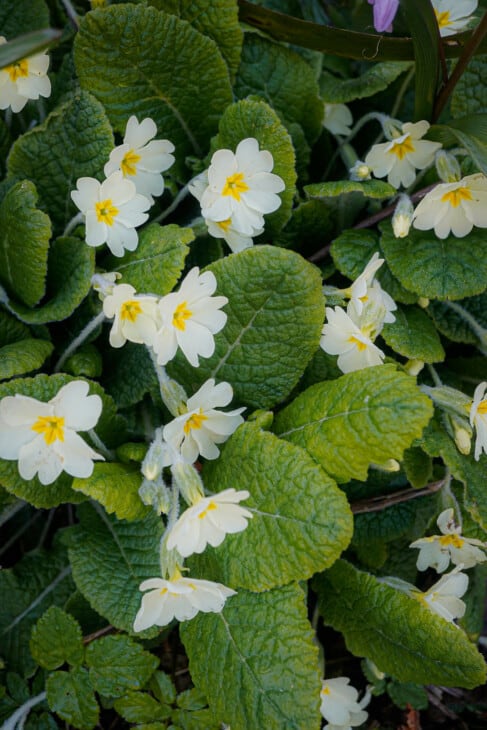
Primrose (Primula Polyantha) has roughly 500 cousins within the Primula genus and is great for new landscapers as they are easy to grow and look great once fully mature. Their small clusters of petals come in all colors, from vibrant red to brilliant blue and everything in between. Primrose is the perfect fit for any garden.
Primrose grows up to 20 inches tall and 20 inches wide when planted in partial shade. Primrose prefers moist and well-drained soil and fertilizer that is acidic. Primrose blooms in spring and lasts the whole season if watered correctly.
Be warned. If you decide to plant Primrose, keep an eye on your pets and visitors, as Primrose is known to be toxic to both humans and animals. They are very pretty to look at but shouldn’t be touched. If you do come into contact with Primrose, ensure that you thoroughly wash your hands afterward.
5. Verbena (Verbena Officinalis)
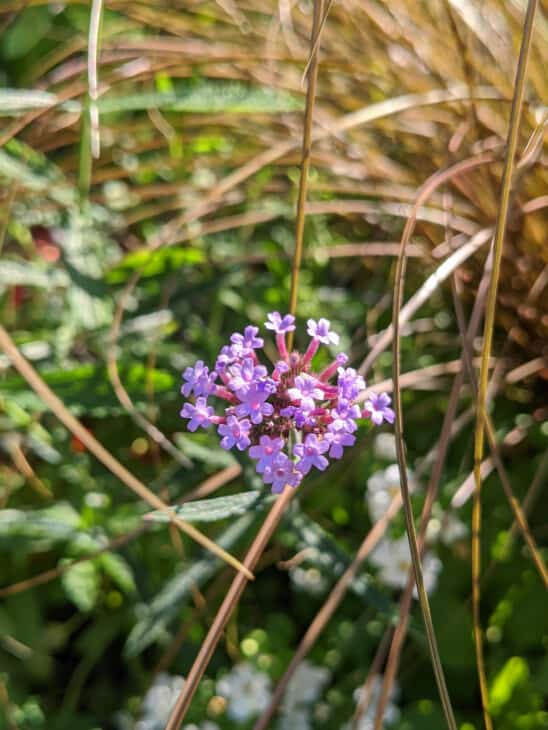
Verbena (Verbena Officinalis) is perfect for homes in hot climates with long summers. These Lantana-like flowers can endure even the driest summers where the sun seemingly never stops shining. Their bright, vibrant petals grow in large clusters, much like Lantana, and are often confused for Lantana.
If you add some Verbena to your garden, ensure you plant them in the sunniest spot in your garden. The more sun you can give your Verbena, the better. Verbena doesn’t really care what kind of soil it is planted in as long as the soil is well-draining.
If you want your Verbena to last through to rainy season, consider working some compost and other organic material into the soil before the rain comes. This will ensure they don’t wash away and keep them well-rooted for the next summer.
6. Yarrow (Achillea Millefolium)
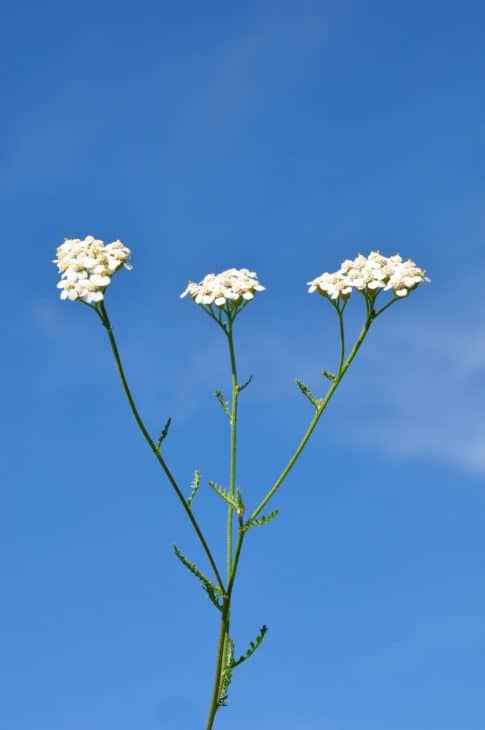
Yarrow (Achillea Millefolium) has small bright yellow, sometimes red, sometimes pink, flowers that bloom in summer. Much like Lantana, Yarrow brings just enough color to your garden to help give it a much-needed lift.
Yarrow needs to be planted roughly 2 feet apart as they quickly establish their roots. Once mature, they stand almost 4 feet tall and make excellent pollinator bait. Yarrow is pest-resistant and can survive tough, dry summer months with ease.
One thing to remember when planting Yarrow is that it is quite invasive and can quickly overpower your garden if left unattended. Ensure you regularly trim back Yarrow that has spread too far before your neighbor starts complaining.
Related: 5 Plants That Look Like Yarrow
7. Zinnias (Zinnia Elegans)
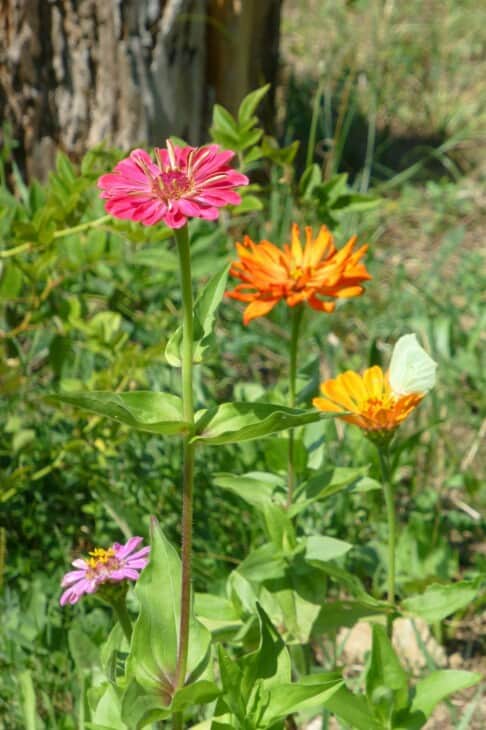
Zinnias (Zinnia Elegans) is a multicolored annual that grows and produces flowers and seeds one season and regrows the following year again. These wonderful plants look like Lantana thanks to their long stems and tightly formed heads. They typically bloom between summer and fall and attract tons of butterflies in the process.
Related: Are Zinnias Poisonous?
Zinnias are really easy to grow and will endure the first hard frost come fall. Zinnias prefer to be planted in full sunlight in neutral to slightly alkaline soil that is well-draining, making them perfect for most gardens.
Zinnias come in three kinds: single, semidouble, and double. This distinction refers to the number of rows of petals and whether the center of the Zinnias is visible or not. Planting Zinnias in your garden will bring new life and abundant color, sprucing up your land and brightening your day. Consider picking up a pack of Zinnias next time you visit your local nursery.

